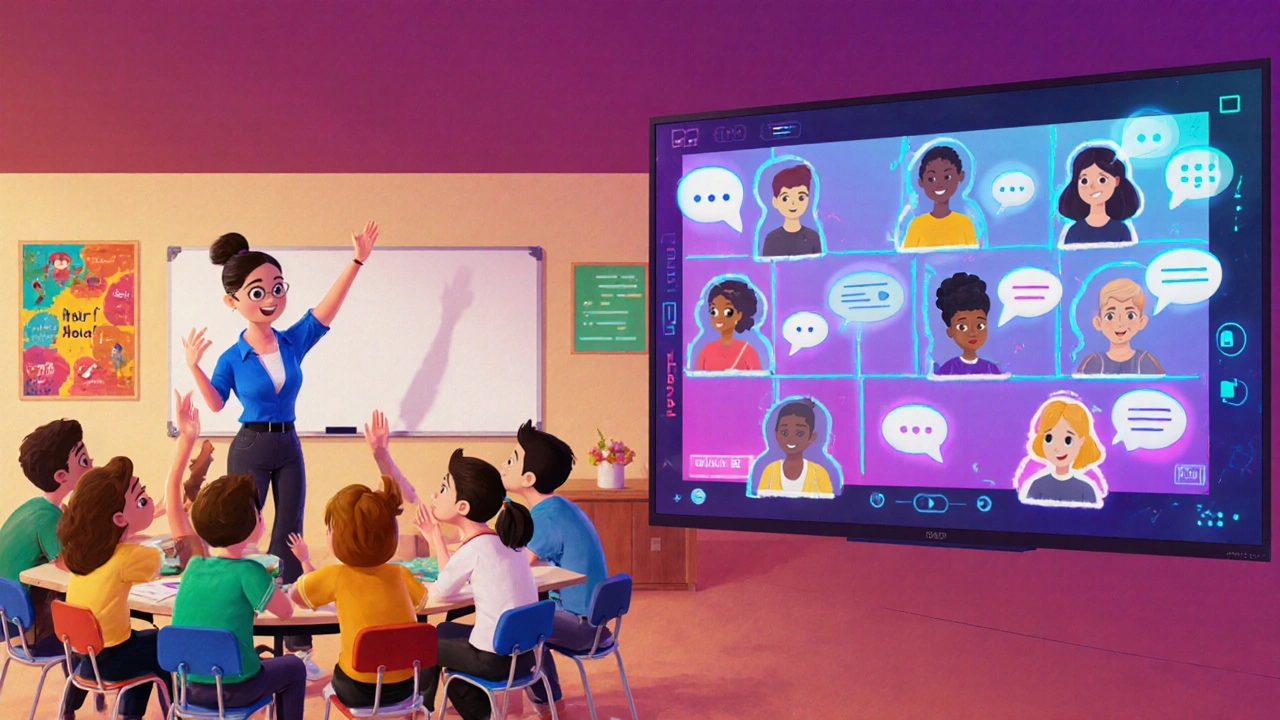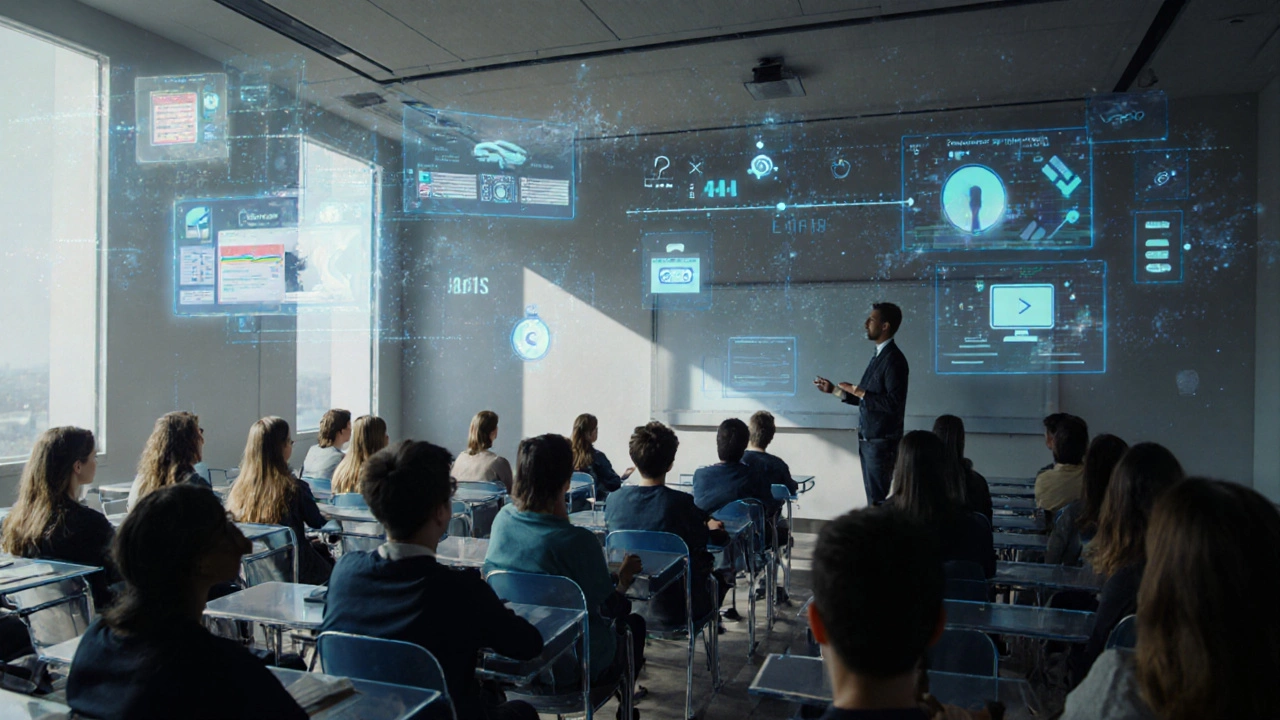Learning Mode Selector
Choose Your Learning Preferences
Answer these 5 questions to find the learning mode that best fits your situation
Key Takeaways
- Classroom learning offers real‑time social interaction, while eLearning provides flexibility and scalability.
- Both modes can achieve similar learning outcomes when designed well.
- Cost, technology needs, and assessment styles differ markedly.
- Blended learning combines the strengths of each approach.
- Choosing the right mode depends on learner goals, resources, and context.
When you hear the phrase classroom learning vs eLearning, the first thing that comes to mind is a clash between brick‑and‑mortar schools and digital classrooms. Yet the reality is richer: each method has its own set of tools, habits, and results. Below we break down the core distinctions, walk through a side‑by‑side comparison, and give you practical tips for deciding which path fits your situation.
Classroom learning is a traditional, face‑to‑face instructional method where students gather in a physical room under the guidance of an instructor. It relies on in‑person lectures, whiteboards, and hands‑on labs. The environment is controlled, and feedback loops are immediate.
eLearning is a digital delivery of educational content through computers, tablets or smartphones, often via a Learning Management System (LMS). Courses can be self‑paced or instructor‑led, and learners access material from anywhere with an internet connection.
Core Components Compared
| Aspect | Classroom Learning | eLearning |
|---|---|---|
| Interaction | Live, spontaneous peer and teacher dialogue | Chat, forums, video calls - may be asynchronous |
| Flexibility | Fixed schedule, location‑bound | Anytime, anywhere access |
| Cost | Facility, commuting, printed materials | Platform licensing, device procurement |
| Assessment | Paper exams, in‑class quizzes, practical demos | Online quizzes, automated grading, e‑portfolios |
| Technology Requirement | Minimal (projector, whiteboard) | Stable internet, compatible devices, LMS |
Advantages of Classroom Learning
Student engagement often spikes when learners can see facial expressions, ask follow‑up questions instantly, and collaborate on physical activities. The social glue of a shared space helps build study groups and peer accountability.
Instructor feedback is immediate. A teacher can spot confusion, adjust the pace, and offer hands‑on demonstrations that are hard to replicate online.
Physical resources-lab equipment, art studios, sports fields-are readily available, making certain subjects (science experiments, performing arts) more feasible.

Advantages of eLearning
A Learning Management System (LMS) provides centralized storage for videos, quizzes, and discussion boards, enabling learners to revisit content as often as needed. This repetition boosts retention.
Flexibility is the hallmark. Working professionals, parents, or remote learners can fit study sessions around jobs, family, or travel.
Scalability reduces per‑learner cost. Once a digital course is built, thousands can enroll with minimal additional expense.
When to Choose One Over the Other
If your goal requires tactile practice-like chemistry labs, musical instrument training, or group sports-classroom learning usually wins.
When learners are geographically dispersed, have tight schedules, or need self‑paced study, eLearning shines.
Budget constraints can swing the decision both ways. Renting a venue and paying commuting costs may outweigh LMS licensing fees, especially for short‑term workshops.
Blended Learning: The Best of Both Worlds
Many institutions now adopt blended learning as a hybrid model that mixes face‑to‑face sessions with online modules. For example, a university might deliver theory lectures via video, then hold weekly labs in person.
This approach leverages the engagement of a physical classroom while retaining the flexibility of digital resources. It also spreads assessment methods-online quizzes for quick checks, in‑person projects for deeper evaluation.

Practical Tips for Implementing Either Mode
- Define clear learning outcomes. Whether you’re teaching in a hall or through a screen, specify what learners should be able to do at the end.
- Match content to delivery. Complex problem‑solving benefits from live discussion; factual memorization works well with mini‑videos.
- Invest in the right tech. For eLearning, ensure your LMS supports mobile access, analytics, and multimedia. For classroom settings, check that projectors and internet are reliable.
- Gather feedback frequently. Use quick polls in class or post‑lesson surveys online to gauge understanding and adjust the pace.
- Plan assessments that reflect the mode. In a digital course, incorporate auto‑graded quizzes and peer‑reviewed assignments. In a physical setting, use practical demonstrations and oral exams.
Common Misconceptions
Some think eLearning is just “watching videos”. Modern platforms embed interactive simulations, gamified quizzes, and community forums, making the experience far richer.
Others assume classroom learning always guarantees higher retention. Without active participation, a lecture can become passive hearing, which studies show leads to lower recall.
Frequently Asked Questions
Is eLearning as effective as traditional classroom learning?
Effectiveness depends on design. Well‑structured eLearning that includes interactive elements, frequent assessments, and opportunities for peer interaction can match or even exceed classroom outcomes for many subjects.
What are the biggest cost drivers for each method?
Classroom learning incurs venue rental, utilities, printed materials, and commuting costs. eLearning’s main expenses are LMS licensing, content production, and device procurement. Over time, digital courses tend to have lower marginal costs per additional learner.
Can students get the same credentials from eLearning as from a physical school?
Accredited institutions award identical certificates regardless of delivery mode, provided the curriculum meets the same standards and assessment rigor.
How does student engagement differ between the two?
In‑person classes benefit from spontaneous dialogue and body language cues, while eLearning relies on discussion boards, live chats, and breakout rooms. Both can achieve high engagement if instructors actively facilitate interaction.
What technology is essential for a smooth eLearning experience?
A reliable LMS, high‑speed internet, compatible browsers, and devices (laptop, tablet, or smartphone). Auxiliary tools like video conferencing, screen‑recording software, and analytics dashboards enhance the experience.

